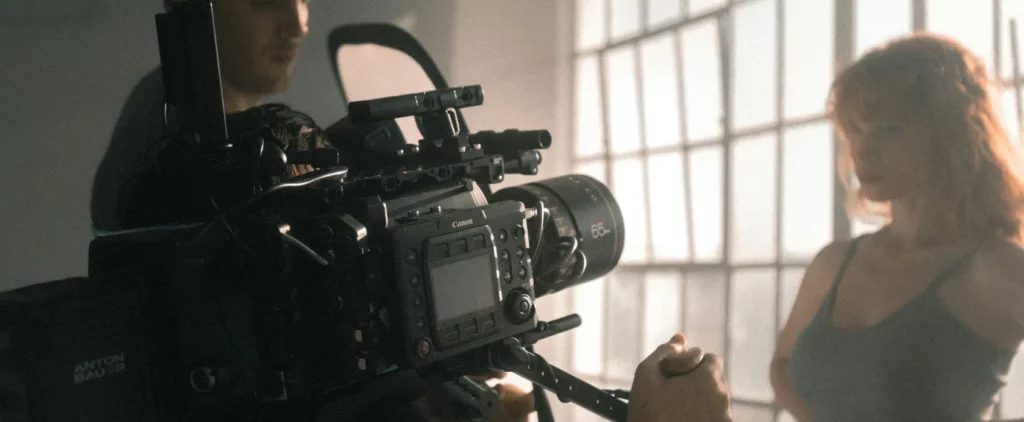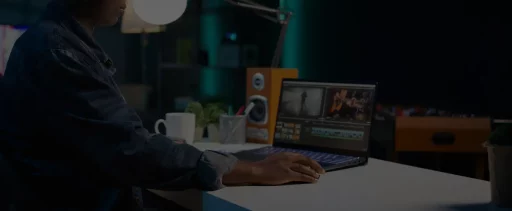It’s part two of the “Navigating Film Festival Circuit’ series. In the first part, we talked about the US film festival circuit, and in the second part, we focus on actionable strategies for its participants.
Knowing indie film festivals in your area, or those accepting submissions of your range, isn’t always enough for a fruitful festival season. One needs to dig deeper and sometimes even go against one’s independent filmmaker instincts to succeed.
Why? Let’s figure out.
Who Is the Film Festival Circuit Target Audience?
Survey data from Parrot Analytics indicates:
- Independent scripted films primarily attract viewers aged 18-34, while documentaries appeal more to the 25-54 age group, with a slight female majority.
- Interest is strong across all racial groups; viewers are highly diverse in terms of race and region.
- U.S. households or individuals stream independent films approximately four times a year.
Why are they watching?
According to the US Independent Film Audience and Landscape Study, audiences turn to independent films for unusual and unexpected stories not found elsewhere. Decision drivers for viewing are the following (ranked by survey respondents):
- Social media
- Friends and family recommendations
- Trailers (viewed online, in theaters, or in broadcasting)
- Reviews (only cited by 17% of respondents)
For indie filmmakers, this means focusing on creating a compelling online presence and cultivating word-of-mouth, both of which are far more effective than traditional reviews alone.

Common Roadblocks for Indie Creators at Film Festivals
So, while the audience is big and active, festivals are not exactly a guarantee of recognition. Filmmaking communities are buzzing with stories of filmmakers finding better reception at mainstream fests for niche work, others have success with DIY routes like Tubi or selling on-demand copies.
A lot of the frustrations in the indie circuit come down to how festivals themselves are functioning. The common frustrations are:
- “Laurel culture”, meaning you can sometimes only land a spot if you have an award (even a made-up one!).
- Lack of transparency in selection criteria – there’s often no clear requirements for the movies to participate in a festival, leaving creators in the dark about the likelihood of acceptance.
- Poor and delayed communication while submission and premiere status is highly time-sensitive for filmmakers trying to plan their film festival circuit without criteria and timing conflicts.
Things like this don’t exactly make life easier for indie productions. So while filmmakers are adapting, festivals need to step up too. Many industry professionals are aware of these pain points, and actively working on removing them:
These are some of the areas that film festivals need to address going forward:
- Curated experiences: With the overwhelming amount of content available on streaming platforms, festivals may focus on curating unique experiences and showcasing films that may not get distribution otherwise.
- Increased competition: As more films are produced and submitted, the competition will intensify. Festivals may need to refine their selection processes to highlight truly innovative and impactful works.
- Partnerships with streaming services: Some festivals may partner with streaming platforms to provide filmmakers with distribution opportunities, allowing selected films to reach wider audiences post-festival.
While streaming has transformed the film distribution landscape, traditional indie film festivals still hold significant value for filmmakers and audiences alike. By focusing on authenticity, quality, and strategic networking, filmmakers can carve out a niche for themselves in an increasingly competitive environment.
Rosa Bosch,
International Film Festivals & Awards Consultant
So, what can be done?
1. Know Your Film And Don’t Submit Blindly
Before submitting to any festival, take a hard look at your film’s strengths, genre, audience, and themes. Is it an issue doc? A slow-burn drama? An experimental short? Most filmmakers submit widely and waste money.
Instead, research festivals that naturally program films like yours, even if they are not big names, then reach out to alumni or watch their past selections. Niche fests and regional events may bring more visibility than premier festivals if they align with your story.
2. Focus on Discovery, Not Just Prestige
Since there are over 1,000 active festivals in the U.S. alone, so there is clearly no scarcity of places to apply. If one festival isn’t the fit for your criteria or vice versa, you can move on to the next one.
But remember: festivals often make decisions based on the first 5 – 10 minutes, so it’s your call to grab attention early. Consider strong cold open, compelling visuals, or clear character stakes upfront.
3. Consider Theatrical Releases

The same US Independent Film Audience and Landscape Study reports Art house audiences attend theaters 2 – 3x more than the average moviegoer. Even with the dominance of streaming, theatrical releases build credibility. Festivals can serve as:
- Launchpads for limited theatrical runs
- Proof-of-concept for educational distribution
- Platforms for audience testing and early press
Finally, does it make sense to take it to the festival at all? Maybe, it will shine in a theater or play better online. A strategic path to indie film success starts with self-awareness and not just passion.
4. Convert Festival Buzz Into Networking
Festivals are incubators for your next opportunities. Don’t just screen and leave. Meet collaborators, producers, and funders. Some brands and foundations do back indie films—especially when values align. Explore smart partnerships (yes, even branded content) where creative control stays with the filmmaker. The ad model is evolving: some smart TV platforms even offer inventory instead of revenue share. This can fuel both financing and marketing efforts.
Also, the indie ecosystem grows stronger when filmmakers lead from within: recommend festivals to peers, mentor emerging filmmakers, and collaborate on screenings or field-wide campaigns to put your name out there.
With the rise of streaming, how do you see the future of traditional indie film festivals?
Indie film festivals are places for discovery, thus prestige counter-programming to what’s available online is key to attract that elusive cinephile audience craving for alternatives.
How can filmmakers stand out in a festival lineup, and what to avoid?
Hire a Publicist for your WP! It will be the best investment in the filmmaker’s career. And do pick one that doesn’t have too many active titles and has secured top reviews of recent festival premieres.
Miguel Angel Govea,
Sales Agent & Partner at alief
Leverage Data (Yes, Even at the Indie Level)
Track which festivals accept your genre, which audiences resonate with your work, and where fans are engaging (socials, screenings, panels). Use tools like FilmFreeway’s stats, Google Analytics for your site, or Eventive’s festival data (if accessible).
- Use festival screenings to generate social proof – quotes, laurels, and reviews.
- Collect emails and social follows from attendees.
- Encourage Letterboxd or TikTok posts to turn viewers into evangelists.
6. Build Real Relationships With Younger Audiences
Your next audience is already watching films on TikTok, following creators on Letterboxd, and debating movies on Reddit. They’re out there – but they need to hear from you. Strategic, consistent engagement with fan communities and influencers can turn passive viewers into your biggest promoters. Be present, be authentic, and make your film a conversation, not just a listing.
Maximize Your Film Festival Marketing Strategy

Local fests, thematic alignment, and festivals are part of the indie filmmaking career arc and not its destination.
Do’s for Indie Filmmakers:
- Submit to festivals matching your film’s genre, theme, or identity (e.g., LGBTQ+, veterans, regional). Sundance-level festivals are meaningless if your film doesn’t fit what they’re screening. Conversely, a smaller regional festival might be “worth it” if it gets you closer to your goals.
- Do your homework and research each festival’s focus, credibility, and track record before submitting.
- Many rejections happen because filmmakers overlook basic eligibility guidelines, so no matter how obvious it seems, read the rules.
- Avoid conflicts between festival dates and premiere requirements.
- Submit locally: regional fests build grassroots support; international fests offer cultural feedback and new networks.
Don’ts for indie filmmakers:
- Don’t submit everywhere and curate your list.
- Don’t assume selection bias based on geography or politics.
- Don’t take rejection personally. Great films get passed over every day.
To sum up, any festival submission decisions are about more than film quality alone.
UVOtv connects indie filmmakers with diaspora communities in the US, offering a direct route to a 68-million-strong audience without the usual red tape and challenges in indie film distribution.
Want to connect with viewers in the US? Email [email protected].





